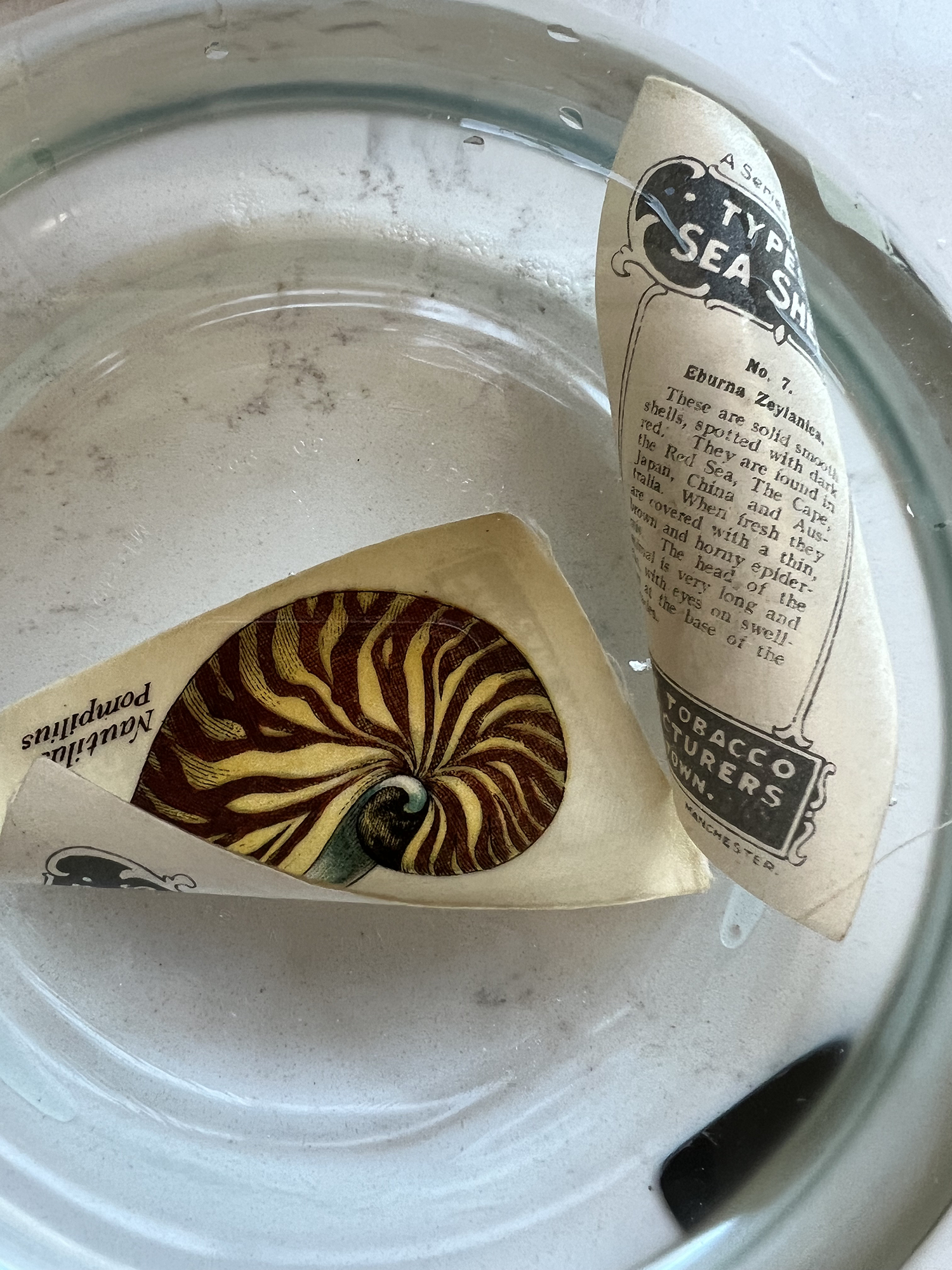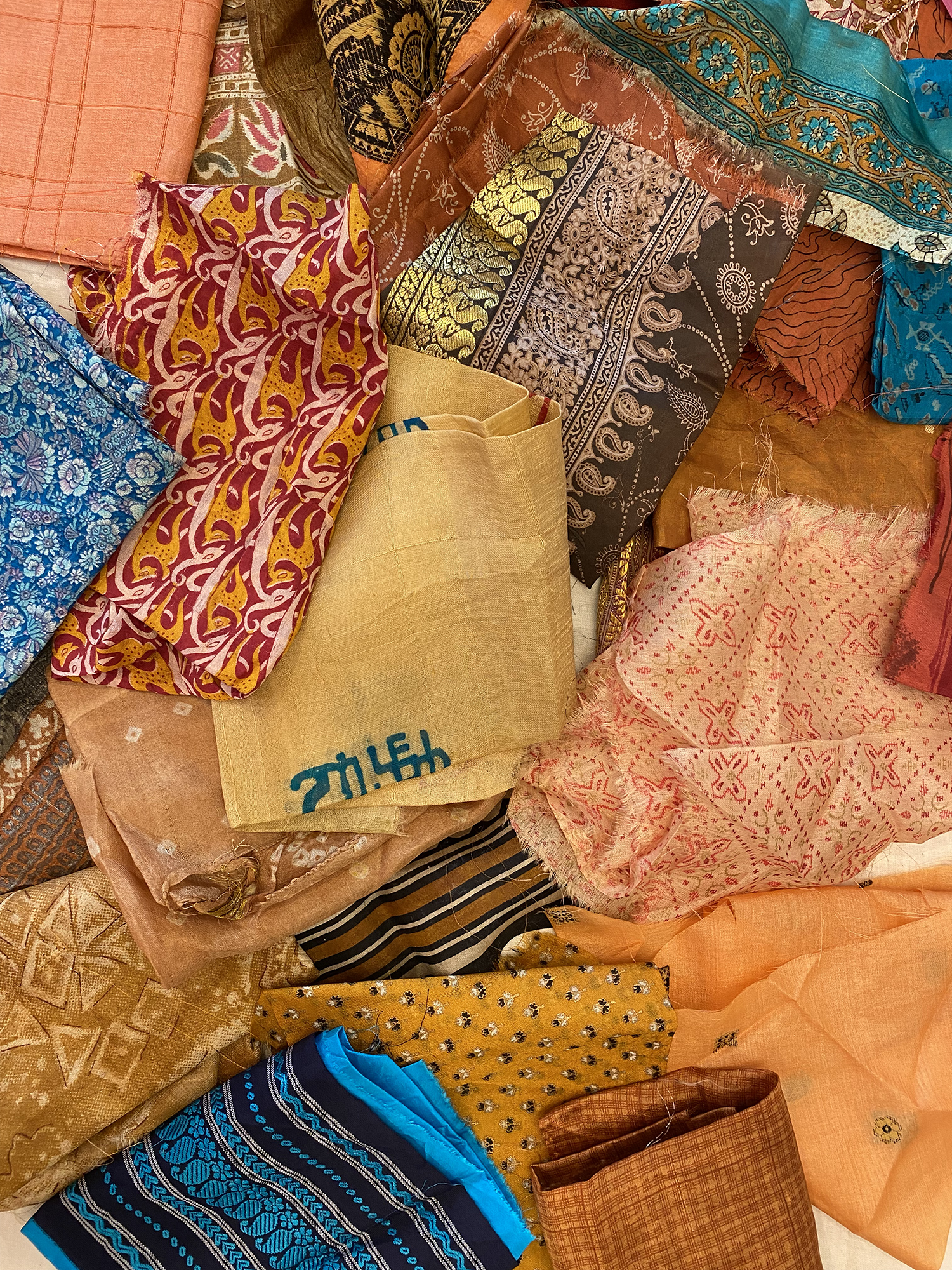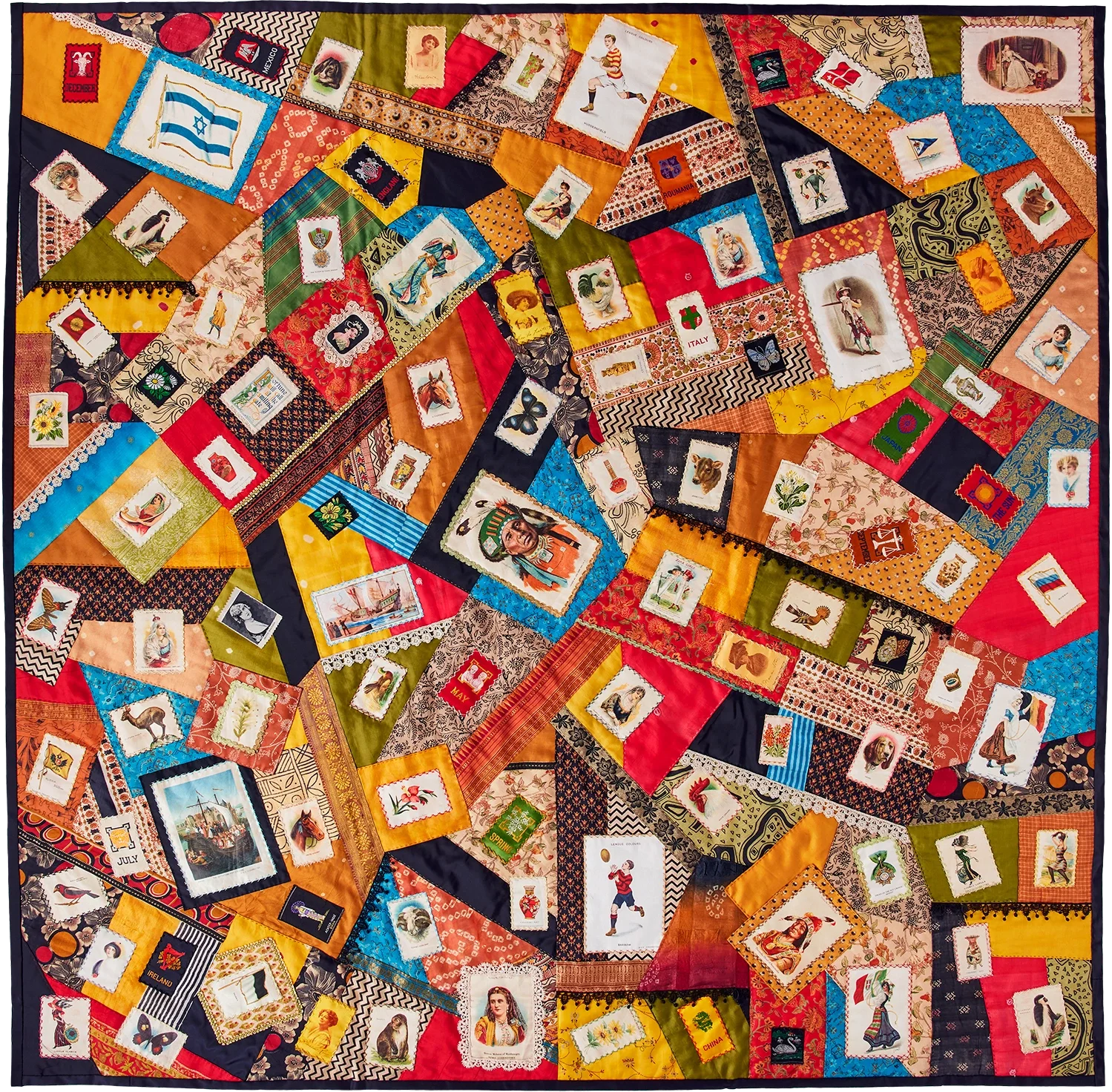Reimagining Tobacco Silks as Fine Art Quilts
Fascinated by the history of tobacco silks, I wanted to bring them back to life as art. I initially used them to create photoetchings on copperplate. But the more I learned about women who sewed them into quilts and items for the home, fabric became a critical element in my pursuit.
The art quilt felt like the ideal choice to honor the past and allow me room to play with and evolve the medium. I developed a theme with silk, using silk taffeta, vintage silk sari fabrics, and hand-dyed silk ribbon, with elements of vintage lace, trims, and glass beads. Every piece is hand-stitched, embroidered, and lightly quilted to preserve the integrity and beauty of the original silks. My studio is my dining table, and I often wrestle with the fact that my work is just as accessible to my two cats as it is to me.
Preparing the Tobacco Silks
Many of the tobacco silks have their original backings still intact. To remove them, the silks must be soaked in water and the backing very gently peeled off with a fine blade. Many of them are discolored, which to me adds to their richness. And sometimes, they are too fragile to use.
A Quilt Takes Shape
I begin with foundation of cotton muslin and tinker with a general layout of the silks and silk fabrics, selecting a color palette and materials that best complement each series of illustrations. The design evolves organically as I work, guided by the character of the images on the tobacco silks. Each silk is backed with muslin as is each piece of fabric, which is cut, ironed, and fitted into shapes that are determined as the design unfolds. The silks are stitched down with a running cross stitch using vintage rayon 5-strand floss. Trims and beads and embroidery are added to complete composition.





